Kakadu
Today was our first experience of Kakadu National Park, the largest national Park in Australia at 20,000 square km (about 1/2 the size of Switzerland). Over half the land that comprises the park is actually owned by Aboriginals and the entire park is jointly managed by the Parks Australia . A quick look at a map of the park will reveal two main access roads, The Arnhem Highway and the Kakadu Highway that meet at the town of Jabiru. Interestingly Jabiru's primary purpose is as a "company town" for the nearby Ranger Uranium Mine. Although tourism is also a major activity within the town.
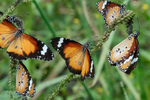
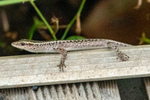

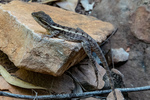

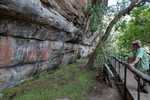
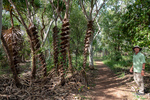
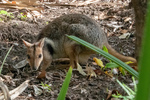
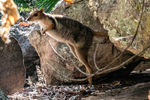

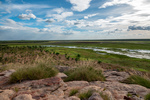
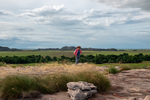
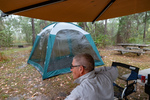
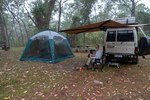
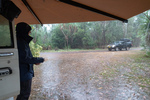
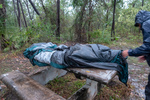
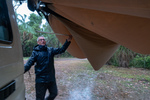
From our camp last night it was a little over 160km (100 miles) along the Arnhem Highway to Jabiru and while there were a few things to stop and see along the way it was pretty much a long drive through tropical savanah.
After a look around Jabiru and a visit to the nearby Park Visitors Center we continued almost to the Eastern boundary of the park to visit Ubirr Rock and its famous aboriginal rock art. Some of the art at Ubirr maybe 40,000 years old but most is about 2000 years old. Unfortunately visitors are asked NOT to photograph the art. So we contented ourselves with some smaller things (flowers and lizards), a very friendly rock wallaby, and some spectacular views from the top of the rocks that previous generations of aboriginals used as a painting canvas.
After the visit to Ubirr we set up camp at the nearby Merl Campground. Since the local mosquito population was a little more than we liked we also set up our insect tent. Thus with most of our gear setup the weather gods decided it was time for a tropical rain storm and within a couple of minutes we were standing in 3 inches of water, our insect tent was soaked and full of water, and the awning was leaking.
Since the clouds did not seem to promise a quick end to the rain we decided to pack up and retreat to Jabiru (40km) in the hope of getting some accommodation with a better roof. Thus we ended up spending the night at Kakadu Resort in Jabiru in an air conditioned room.